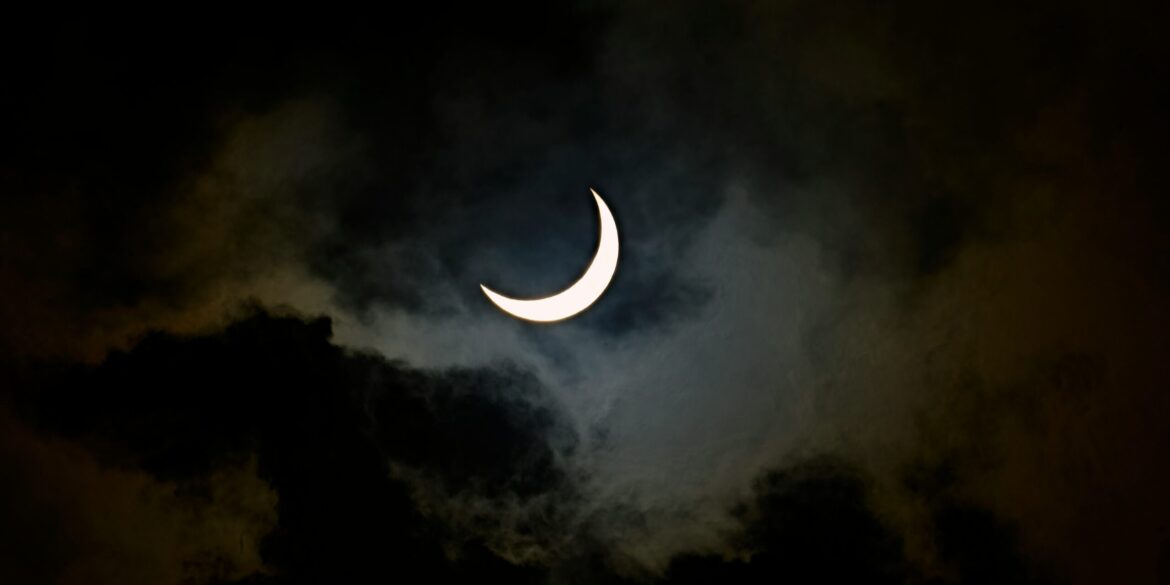A richly celestial spectacle unfolded across the United States on the evening of July 28, 2025, combining a rare lunar–planetary conjunction with the early signs of multiple meteor showers.
Roughly 45 minutes after sunset, stargazers were rewarded with a breathtaking sight: a slender waxing crescent Moon—just 19 percent illuminated—suspended within about one degree of Mars in the western sky. While Mars shimmered as a fiery red pinprick, Earthshine subtly lit the faint dark portion of the Moon, creating an ethereal tableau visible to the naked eye.
This event marked the grand finale of July’s astronomical drama, following a full Buck Moon earlier in the month and preceding the peak of the iconic Perseid meteor shower in August. Experts emphasized the uniqueness of seeing Mars and the Moon appear nearly side by side in the constellation Taurus or Virgo, depending on location. They also encouraged viewers in light-polluted areas to use binoculars for a better view.
As the sky darkened, the lesser-known Piscis Austrinid meteor shower began to make a subtle appearance. This minor shower, active from mid-July through early August, typically contributes around five meteors per hour. It reached its early peak around July 28, just in time for observers to catch fleeting streaks amid the planetary pairing.
Though the Piscis Austrinids offered only a modest showing, the true spectacle lay just ahead. In the hours following July 28, two more meteor showers began ramping up: the Southern Delta Aquariids and the Alpha Capricornids.
Read Also: https://goodmorningus.com/rare-moon-and-pleiades-eclipse-captivates-skywatchers/
The Southern Delta Aquariids, active from mid-July to mid-August, are known for producing a steady stream of meteors, with rates typically between 15 and 20 per hour and potentially up to 25 under dark skies. Its broad peak season centers on July 29 to 31, when the radiant in Aquarius is highest before dawn. Around 3 a.m. local time on July 30 was considered prime viewing.
Meanwhile, the Alpha Capricornids, also active through mid-August, peaked around July 30 to 31. Though they produce fewer meteors—generally around five per hour—they stand out for their bright, slow-moving fireballs visible even under moderate light pollution.
As astronomy experts noted, the coincidence of both showers peaking on the night of July 29 to 30, combined with a waning crescent Moon setting early, created near-perfect conditions. Viewers across the continental U.S., especially in southern states, had a prime opportunity for a dual meteor show with up to 25 meteors per hour and minimal moonlight interference.
Several factors converged to make this one of the best nights of the summer for skywatching: the striking Moon–Mars conjunction, the early moonset allowing darker skies, the triple meteor showers, and favorable viewing conditions. Observers were advised to lie back with an unobstructed southern view, allow time for their eyes to adjust to the dark, and avoid using bright lights to maximize their chances of seeing the meteors.
July 2025 has been celebrated as one of the most astronomically active months in recent memory. From the Buck Moon on July 10 through multiple planetary conjunctions, the month culminated in a triple event—Moon, planet, and meteors—that served as a warm-up to the legendary Perseid meteor shower in August.
The Southern Delta Aquariids originate from Comet 96P/Machholz, while the Alpha Capricornids are linked to debris from Comet 169P/NEAT. These meteor streams are part of Earth’s annual journey through cosmic dust left by long-past comets. While the Delta Aquariids offer quantity, the Alpha Capricornids provide dramatic brightness and long trails, making their overlapping peaks a particularly rich visual treat.
On July 28 and the nights that followed, the heavens delivered a striking reminder of the solar system’s celestial choreography. For those who looked up, the sky offered not just a show, but a rare experience that connected science, nature, and awe.

